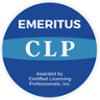In a decision dated March 20, 2012, Justice Breyer writing for a unanimous court, held that claims to administering a drug, followed by measuring the levels of metabolites of the drug, in order to optimize the amount administered, are not patent eligible, because they are attempts to monopolize naturally-occurring correlations. (A copy of the decision is also found at the end of this post.)
The steps that the Fed. Cir. found transformative, namely the “administering step” of the drug and the “determining step” wherein the metabolite levels are measured, were disregarded as “simply telling doctors to engage in a well-understood, routine, conventional activity previously engaged in by scientists in the field,” citing Parker v. Flook. Citing Bilski, Benson and O’Reilly v Morse, the Court concluded:
“Further support for the view that simply appending conventional steps, specified at a high level of generality, to laws of nature, natural phenomena and abstract ideas cannot make those laws, phenomena and ideas patentable.”
The Court bought the argument that patent law can inhibit future discovery by improperly “tying up the use of laws of nature and the like.” Mayo had argued that the claims at issue inhibited research that would improve the assay, e.g., by refining the recited ranges of metabolite levels. But the Court apparently completely ignored those ranges as claim limitations – and, without the high/low ranges, the claim would likely never have been allowed.
I have not had the time to read the entire text of the decision at this point, and these comments are based on the Syllabus, but the entire patent bar will be left to wonder what, if any, medical diagnostic claims will be patent-eligible in the future. In the Metabolite dissent, Justice Breyer and two other Justices would have invalidated a claim to measuring the level of homocystine in a fluid of a patient and arriving at a diagnosis of colbalamin deficiency, based on comparison of the homocystine level with a benchmark “normal” level.
It is hard to think of a diagnostic assay that does not either detect the +/- presence of a marker (like anti-HIV antibodies) or involve the comparison of the level of a marker of some sort (like homocystine or PSA) with a normal benchmark level. But now, all of these assays seem to have been converted into no more than the discovery of laws of nature. The key phrase in the decision may be “specified at a high level of generality” but I am too shocked by this decision to find any comfort in this “guidance.”






